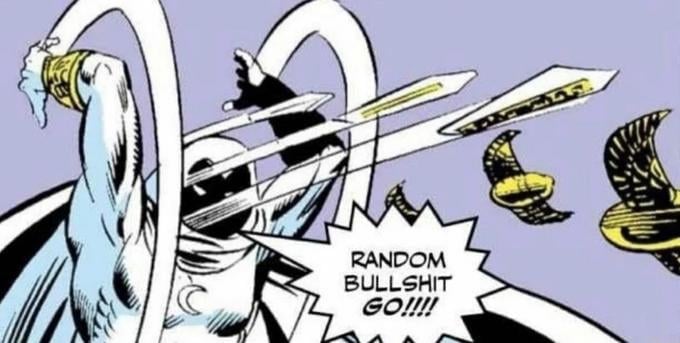I found these kind of cool as an idea, as they can be added rather easily to existing cities and provide some greenery without taking up space, while providing shade:
If
youcities didn’t cut down all the trees to put up asphalt and skyscrapers, maybe these wouldn’t be needed.If you built dense cities, like this you massively reduce land usage of cities. It also removes the need for cars and allows for easier sharing of many other resources. This means dense cities have a much lower carbon footprint then other forms of living. London for example has per capita emissions of 3.3t. Skyscrapers are not the best solution for density, but they work and in this case thats mid density housing.
This is a good way to have some greenery in a place, where planting a tree is difficult. This is a 6m wide street with shops on both sites, which is mainly used by pedestrians. If you plant a tree on the sites of the street, it does not get enough light. In the middle of the street it ends up blocking trucks from resupplying the shops, which is also not an option.
If you build dense cities, you don’t need to build car infrastructures. You rely on walk, bike and public transport. You have plenty of space for trees and green spaces everywhere.
I grow up next to an old medieval town. I’m not a stranger to how these towns are build. There are a lot of places where you can plant trees in the streets. Of course, the streets will be narrower with the place for just the pedestrians, bikes, and emergencies services. It’s a fully car free town in this case. Your link is perfect. You have Pl. de España on the right where you could plant a small forest on it.
You see all the terrasses. They could have trees in the middle.
For this purpose of reducing the temperature, you have this project where they will keep a central bus stop but plant many trees to cover it.
That might be me having a bit of a skewd idea of what having trees everywhere means. Still too many cars though and obviously relatively new.
I didn’t cut them down
If only we hadn’t invented agriculture, none of our current problems would exist
The people below are not getting shaded by or seeing the vegetation tho? If you need shade you can just use the canvas without the plant life and all the other stuff needed to sustain it up there. Actually if this system is intended for narrow streets like this it seems completely unnecessary as the buildings already shade the street. Otherwise if you want plant shade use trees or malleable plants like wines instead of inventing ways to put plants in places they aren’t meant to be.
Also narrow streets do not shade, when you have sun shining from above, which happens every day at noon.
…in the tropics, sure
This is totally dumb. I wouldn’t want one attached to my building. How heavy are they? I’m guessing it doesn’t snow there? How do you weed it when it invariably gets infested with weeds. The irrigation system is sure to break, how do you service that? This will look like absolute shit in a year.
I make canvas and awnings. Shade sails are almost always really stupid. Big bucks for very little bang. Most of the day you end up with a wee thong shadow halfway up the wall
I had an office with a few of these canvas triangles high up above us below a bunch of high windows and it was beautiful! The way the window shadows hit the canvas and the way they shaded each other made beautiful diffused light and interesting shadow shapes.
If somebody had put vegetation on them the whole experience would’ve been worse.
They probably also need an irrigation system? Or need to be watered daily? They don’t look like they would hold a lot of water when the sun evaporates everything.
It does have an irrigation system. You can see the pipe assembly on the left. It is that big white thing running through. That goes to a water tank, which collects the rainwater from the sails and then pumps it back up when needed.
I see, thanks. You probably mean on the right? It is also explained in the article you linked.
I also have concerns about nutrient cycling, every rain and over watering is going to wash nutrients into the street below. This is an interesting idea, but could use more refinement.
Looks fragile, like as if the next strong storm would remove all the plants. But maybe I’m wrong.
I dont really know though … many modern constructions are made to look structurally impossible
People drastically underestimate the strength of steel, especially when woven like in this case. Those will hold tonnes of weight with no flex.
Well they’d better considering they’ll weigh tons
You do realise this is the stuff they build suspension bridges with?
I wonder how much these weigh?
That doesn’t seem like a great construction method. These seem difficult to maintain which imperils how long thoae awnings and cables will last.
But still a green roof strategy on a more structurally sound awning though? I would be down with that.
I like this, better than nothing. I wonder what the life is on these things?
Seems to be plants
I love it!
But I’ve never seen a similar protect (using plants) that could withstand strong winds (100~200km/h).
I mean, the solution is called a self-sustaining forest, but cities don’t like that until post apocalyptic times.
I love it!
– @Evil_Shrubbery
Well yes, you would.
My evil plans of total shadification revealed!!
Cities already have plenty of shadows. That’s why they’re called “concrete canyons”.
People in cities need more sunlight, generally speaking.
Sort of, but sun on concrete tends to result in a lot of extreme heat. Cities sometimes have microclimates a few degrees hotter than the surrounding area just because concrete is so bad at dissipating heat. Plants and trees tend to do a lot to moderate temperatures.
It results in extreme heat on places continually bombarded by sunlight, eg the tops of buildings, and parking lots. Down in the canyons it isn’t as much of a problem.
Isn’t it the same if people dry their clothes out ?










